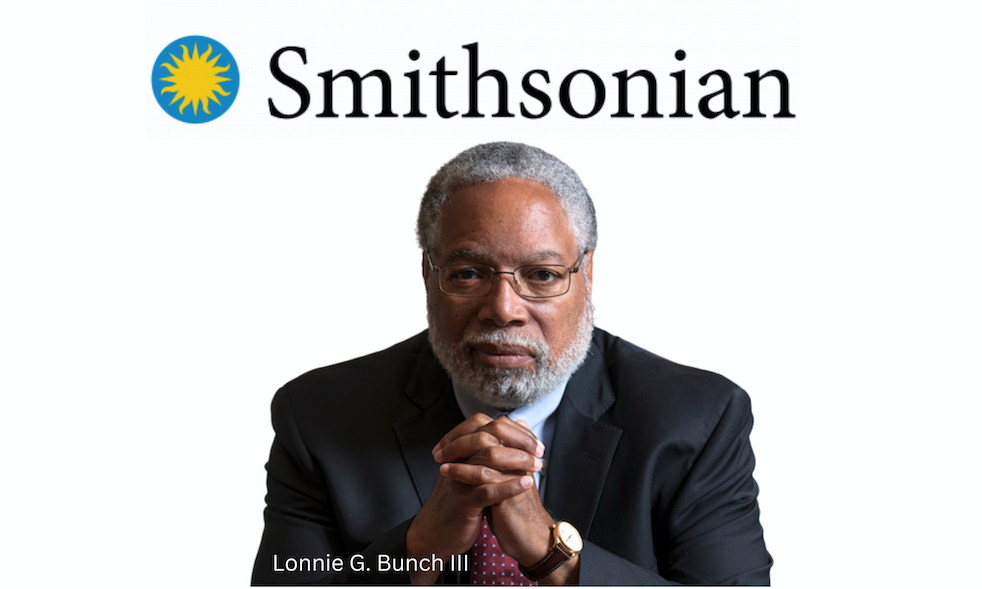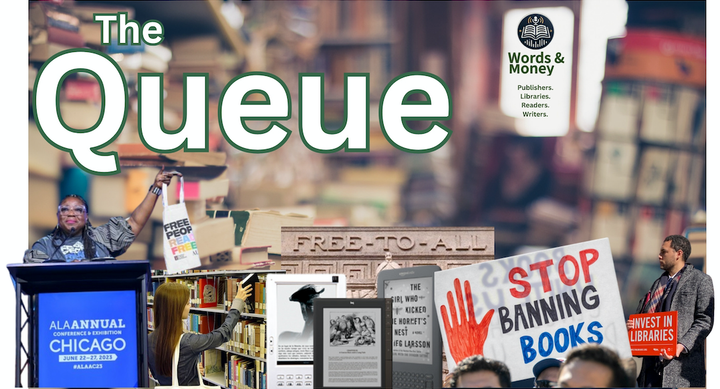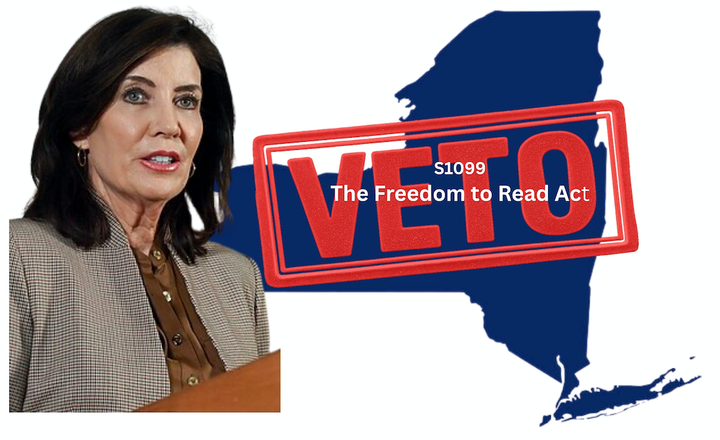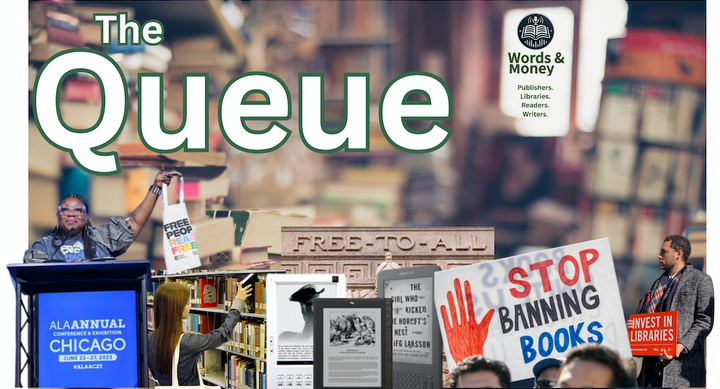Trump Administration Targets the Smithsonian
In an August 12 letter, Trump officials announced a plan to review the venerable institution’s “museums and exhibitions” to ensure “alignment with the President’s directive to celebrate American exceptionalism."

The Trump Administration is looking to make history—or, maybe more to the point, remake history.
In an August 12 letter to Smithsonian Institute Secretary Lonnie G. Bunch III, Trump officials announced a plan to review the venerable institution’s “museums and exhibitions” to ensure “alignment with the President’s directive to celebrate American exceptionalism, remove divisive or partisan narratives, and restore confidence in our shared cultural institutions.”
The letter outlines a plan to collect a wide range of information from across the Smithsonian, with the expectation that the institution will, “within 120 days,” begin “implementing content corrections where necessary, replacing divisive or ideologically driven language with unifying, historically accurate, and constructive descriptions across placards, wall didactics, digital displays, and other public-facing materials.”
“As we prepare to celebrate the 250th anniversary of our Nation’s founding, it is more important than ever that our national museums reflect the unity, progress, and enduring values that define the American story,” the letter states, citing Trump’s March 27 Executive Order 14253, Restoring Truth and Sanity to American History. “Our goal is not to interfere with the day-to-day operations of curators or staff, but rather to support a broader vision of excellence that highlights historically accurate, uplifting, and inclusive portrayals of America’s heritage.”
However, belying claims of not to wanting to "interfere" with Smithsonian curators and staff, the letter demands a wide range of materials and information, with plans to "review" not only the Smithsonian’s "public facing" content, but also its curatorial processes, exhibition planning, collection use, and "narrative standards."
The letter suggests the administration is planning a radical reshaping of the Smithsonian.
In addition to demanding all "catalog and program" materials, including materials beyond those related to next year’s America 250 celebration, the administration is also aiming to collect an array of internal policies and information, including staff manuals, job descriptions, organizational charts, as well as "communications or memos pertaining to exhibition or artwork selection and approval processes."
The letter also demands all "educational content" linked to Smithsonian exhibitions, and "a list of active partnerships with outside contributors including artists, historians, nonprofits, and advocacy organizations."
Despite the wide array of materials demanded, the administration anticipates a short timeline, with plans to complete its "review" and issue a final report in early 2026.
"By focusing on Americanism—the people, principles, and progress that define our nation—we can work together to renew the Smithsonian’s role as the world’s leading museum institution," the letter states.
This latest missive comes after Trump, in his March 27 executive order, alleged the existence of "a concerted and widespread effort" to replace "objective facts with a distorted narrative driven by ideology rather than truth."
In response, Trump's executive order directs Vice President JD Vance to rid the institution of what he called "improper ideology," and to bring the Smithsonian in line with the administration’s views, and authorizing the denial of funds for "exhibits or programs that degrade shared American values, divide Americans based on race, or promote programs or ideologies inconsistent with federal law and policy."
As Words & Money previously reported, Secretary Lonnie G. Bunch III offered a calm initial response to Trump’s March 27 executive order. In a memo to staff posted to the Smithsonian’s Reddit account—and later deleted—Bunch told staff that the Smithsonian’s "commitment to scholarship and research is unwavering," and that the institution would "remain committed to telling the multifaceted stories of this country’s extraordinary heritage."
Bunch, the first African American and first historian to serve as head of the Smithsonian, was appointed as the 14th Secretary of the Smithsonian in June 2019. In his role, he oversees 21 museums, 21 libraries, as well as several research centers and education units, and the National Zoo.
The letter comes as the Trump administration has undertaken broad efforts to recast American history. Earlier this year,the administration asked workers to report signs and displays at historical sites across the nation that include information that the administration might consider inappropriate. That effort has since led to a University of Minnesota-led campaign called “Save Our Signs,” in which a coalition of librarians and historians is cataloging signs and displays at national parks to build an archive before the materials are deleted or altered.
“Real history is not just happy stories,” the Save our Signs website notes. As of this week, the site has collected images of some 4,000 at risk signs and displays, many of which, the site points out, could be censored from public view by the administration's September 17 deadline.
Furthermore, the administration's "review" come after observers pointed out that information about Trump’s two impeachments in a Smithsonian exhibit were recently removed, and later replaced with softer language earlier this month.
It remains unclear, however, just how much power the Trump administration has to change the Smithsonian. The Smithsonian is not an executive branch agency, but “a trust instrumentality” run by a Board of Regents, which, according to the Smithsonian website includes “the Chief Justice, the Vice President, three members of the Senate, three members of the House of Representatives, and nine citizen members appointed by Joint Resolution of Congress.”
Regardless, the review suggests that Smithsonian leadership is now a step further along on what certainly appears to be a collision course with the administration.
In May, tensions flared when Trump announced on social media that he had fired National Portrait Gallery Director Kim Sajet, calling her "a strong supporter of DEI.” Sajet however, reportedly remained in her post as Smithsonian officials disputed the president’s authority over its personnel matters. Ultimately, Sajet decided to step down in June.
Meanwhile, while not directly referring to the president’s attempt to fire Sajet, Smithsonian leaders in a June 9 statement reiterated their independence, and announced plans to further clarify their policies to that end.
“In 1846, the Smithsonian was established by Congress as an independent entity,” the statement reads, adding that “all personnel decisions are made by and subject to the direction” of the secretary, with oversight by the Smithsonian Board.
“To reinforce our nonpartisan stature, the Board of Regents has directed the Secretary to articulate specific expectations to museum directors and staff regarding content in Smithsonian museums, give directors reasonable time to make any needed changes to ensure unbiased content, and to report back to the Board on progress and any needed personnel changes based on success or lack thereof in making the needed changes,” the statement notes, pledging that the board will "continue its vigilant, independent oversight of the Smithsonian and its museums to protect their rigorous scholarship and expertise, non-partisanship, and accuracy.”


